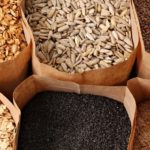When Homer Simpson first uttered the word “D’oh!’ (which 300 linguists have agreed is The Simpson’s most important contribution to the English language), he might as well have had in mind the recent announcement by researchers that junk food actually is addictive. As anyone who ever finished a bag of Doritos three days into a diet knows, “D’oh!!! Of course the stuff is addictive.”
The researchers made their announcement in response to a new study led by the Scripps Research Institute in Jupiter, Florida. All joking aside, the study actually did contain some genuine surprises, particularly in revealing just how extraordinarily addictive junk food actually is. In essence, the researchers found that junk foods exert an addictive pull as powerful as that conferred by the most highly addictive narcotic drugs.
Dr. Kenny and his colleagues divided rats into three groups and then headed to the grocery store. “We basically bought all of the stuff that people really like — Ding-Dongs, cheesecake, bacon, sausage, [chocolate frosting, pound cake] — the stuff that you enjoy, but you really shouldn’t eat too often,” he said. They also bought healthy food. Each group of rats followed a different diet for 40 days. The rats in the first group ate healthy, regular rat food only. In the second group, the rats got healthy rat food plus an hour of access daily to junk food. The third group had unlimited access to both health food and junk — like most humans do.
The rats that had access to the treats only an hour a day managed to cram most of their eating into that blissful hour, eschewing the rat food the rest of the time. Meanwhile, the third group of rats — those who had round-the-clock access to treats — quickly turned obese and demonstrated a strong preference for Ding Dongs and cheesecake and the like. But their food preferences weren’t the only change the rats experienced. The researchers found that the brain circuitry in the junk-food-gorging rats actually changed. The more high-fat treats the rats ate, the more they craved treats in the future — the more treats it took on subsequent feedings for them to experience satisfaction. In other words, they developed “tolerance,” just the way junkies and alcoholics do, needing more and more of the “junk-food substance” in order to achieve a pleasure “rush.”
“It was quite profound,” says study author Paul Kenny. “The reward-response effects in the junk-food rats were “very similar to what we see with animals that use cocaine and heroin.” The response became even more pronounced as the rats gained more weight. The fatty treats also seemed to lower levels of a dopamine receptor in the brain of the rats. In humans, lowered levels of dopamine receptors lead to increased pleasure-seeking behavior. Under normal conditions, dopamine deprivation excites normal desire or motivation, but in the case of the rats, eating junk foods made the deprivation severe enough to drive the mild desire to pathological levels.
The biggest surprise in the study was in the extreme behaviors that the compulsive cravings led to. The sadistic researchers launched a nasty plan. Every time the rodents–who by now were addicted to fatty treats — approached their pleasure buffet, they got a painful shock to their feet. Amazingly, this shock did not stop them from going to the junk food spread and continuing to eat, in spite of a bright light that warned them before each shock was issued, and even though they had the option of choosing a shock-free healthy meal instead. The other two groups of rats, including the group allowed only an hour of eating junk foods daily, opted for the healthy meal rather than the shock-laden foods. In other words, the more treats the rats enjoyed, the more hooked on treats they became, to the point where they would endure extreme punishment in order to get a fix, like junkies who behave in dangerous, self-destructive ways for a fix of drugs. And again, this behavior became more pronounced as the rats gained increasing amounts of weight.
Perhaps the most shocking tidbit of all, though, was the finding that the addicted rats absolutely refused regular food, even after their treats were taken away. They chose to starve rather than return to rat kibble. “They actually voluntarily starved themselves,” Kenny said.
What does all this information add up to, other than a good excuse for the zipper that no longer closes? While it’s understood that what’s true for rats isn’t necessarily true for humans, the behavioral response is close enough for at least some experts to suggest that obesity should be reclassified as a psychiatric disorder. “Once we start to consider obesity and pathological overeating as a psychiatric illness, we’re going to move a lot closer towards understanding how to come up with therapies or treatments,” says addiction biologist Jon Davis of the University of Ohio. He doesn’t mention the fact that addiction therapies certainly aren’t fail-proof. Even after completing drug-addiction recovery programs both in prison and in the community, male addicts have a recidivism rate of over 40 percent. Drug addiction is an extremely hard nut to crack.
On the other hand, 40 percent is a far lower failure rate than dieters experience, given that 95 percent of all diets ultimately fail (and that two-thirds of all adults in the US are now overweight). The Scripps Institute study certainly throws cold water on the cold turkey theory of dieting — the “just stop eating junk and go healthy” prescription. If people respond like the rats in the study — if they’d be willing to suffer extreme punishment for chocolate chip cheesecake — mere willpower probably will continue to fail while obesity statistics continue to rise. Here’s yet more evidence that food manufacturers need to be financially pressured to start migrating their product lines away from high-fat foods, high-fructose corn syrup, and processed junk and be prevented from having carte blanche to advertise their narcotic edibles on media frequented by children.
The bottom line is that merely offering healthy alternatives is not enough. As we just learned, addicted rats will starve themselves rather than eat healthy alternatives. Instead, manufacturers must be financially induced to steadily offer fewer and fewer addictive foods until people really have no choice but to eat healthier diets. In the meantime, keep in mind that if the addicted can manage to break their unhealthy routines long enough to lose substantial weight, they can rewire their brains back to normalcy enough to break the addictive cycle. As it is, five percent of people already manage to do that on their own.
:hc












Wow very excellent article. I remember doing an experiment similar to this in elementary school. We had to 2 rats, one we fed only good food which included fruit and vegetables along with rat chow… the other the rat got junk food we smuggled from home. I remember how unhealthy the rat became. It got more and more lethargic and did very little accept eat. It rarely ever used the wheel in the cage and it didn’t play anymore. A once social rat became unsocial. It died. Needless to say that experiment made a huge impression. I became sold on health food.
I was in a meeting years ago now where we discussed addictive food additives that are hidden in food under the guise of natural flavorings. Now this may well be agents that add the flavor we want or the smell we expect from tasteless overprocessed cardboard like foods that we seem to overly crave. None the less is far from natural rather completely chemically compounded. If this what keeps us coming back for more over and over again how different are we from rats. If human being have the ability to reason it should be reasonable to say I want food 100% whole and real.
I have a step-son that is a smart boy but is a junk food junkie. He wouldn’t eat anything truly healthy and would rather be hungry than to eat fresh sliced peaches or strawberries. Reluctantly he began eating new foods some hidden and others out in the open. He has a much better tolerance for broccoli, carrots, casseroles and soups. He wasn’t sure that he liked macaroni and cheese made with real cheese but he does now. Homemade pizza made with real chicken with homemade sauce and crust takes more time but we all know what is in it. Instead of a Little Debbie’s cupcakes made with white whole wheat flour and real cocoa can’t be beat and real whipped cream or real egg white high protein seven minute frosting is yummy… yes with natural vanilla extract an honest natural flavoring.